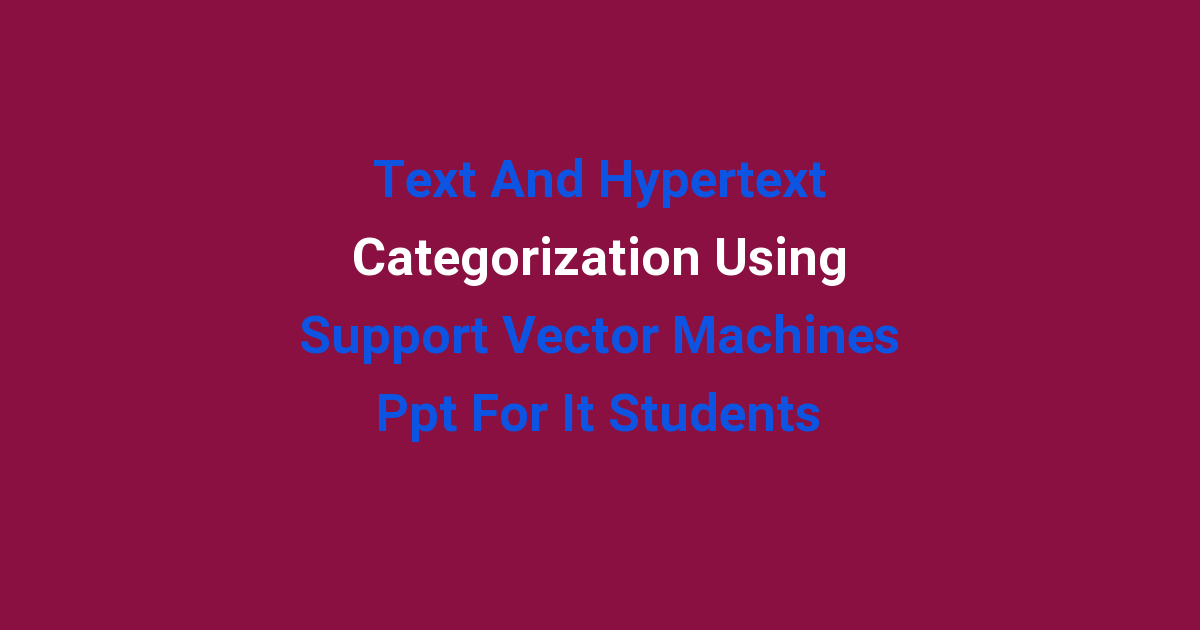Support Vector Machines in Text and Hypertext Categorization Presentation for IT Students
Text and Hypertext Categorization Using Support Vector Machines
Introduction
In the field of information retrieval, text and hypertext categorization play a crucial role in organizing and classifying large volumes of textual data. Support Vector Machines (SVM) are widely used in this process due to their ability to handle high-dimensional data efficiently. This project aims to explore the application of SVM in text and hypertext categorization for IT students.
Problem Statement
The existing systems for text and hypertext categorization often face challenges in accurately classifying documents and web pages. Traditional methods may struggle with the complexity and variability of textual data, leading to lower classification accuracy. Hence, there is a need for a more robust and efficient system that can better handle the classification of textual information.
Existing System
The current systems for text and hypertext categorization typically rely on methods such as Naive Bayes, K-Nearest Neighbors, and decision trees. While these methods have their strengths, they may not always provide optimal classification results due to their limitations in handling high-dimensional data. Additionally, these methods may require extensive feature engineering and parameter tuning to achieve satisfactory performance.
Disadvantages
Some of the disadvantages of the existing systems for text and hypertext categorization include:
– Limited ability to handle high-dimensional data efficiently
– Vulnerability to overfitting and underfitting
– Dependence on manual feature engineering
– Sensitivity to parameter tuning
– Suboptimal performance on complex textual data
Proposed System
The proposed system for text and hypertext categorization will utilize Support Vector Machines (SVM) as the primary classification algorithm. SVM has been proven to be effective in handling high-dimensional data and is known for its robustness and generalization capabilities. By leveraging the power of SVM, we aim to improve the accuracy and efficiency of text and hypertext categorization tasks.
Advantages
Some of the advantages of the proposed system using SVM for text and hypertext categorization include:
– Ability to handle high-dimensional data efficiently
– Robustness against overfitting and underfitting
– Minimal dependence on manual feature engineering
– Less sensitivity to parameter tuning
– Improved performance on complex textual data
Features
The key features of the proposed system include:
– Utilization of Support Vector Machines for classification
– Automatic feature extraction and selection
– Efficient handling of high-dimensional data
– Enhanced accuracy in text and hypertext categorization tasks
– Potential for scalability and adaptability to different datasets
Conclusion
In conclusion, the application of Support Vector Machines in text and hypertext categorization presents a promising approach to improving the accuracy and efficiency of classification tasks. By leveraging the strengths of SVM, we can overcome the limitations of existing systems and achieve better performance in organizing and classifying textual data. This project aims to contribute to the advancement of text and hypertext categorization techniques for IT students, showcasing the potential of SVM in handling complex textual information effectively.

